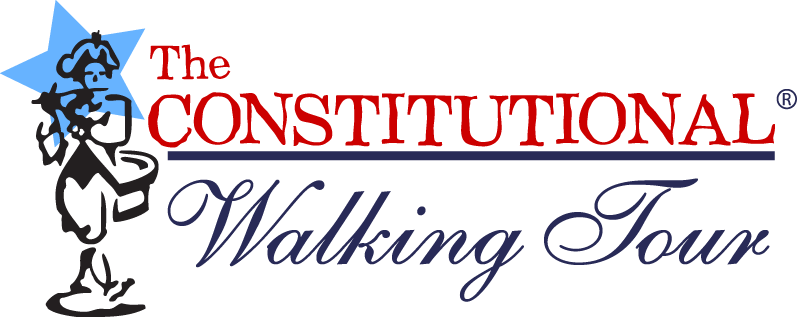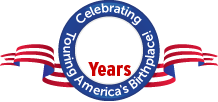The Birthplace of America
Related Posts:
- Independence Hall Tickets & Visitor Guide - A guide on how to get tickets to see to America's Birthplace
- Liberty Bell Visitor Guide
- Buy Tickets for The Constitutional Walking Tour of Philadelphia – See 20+ Sites on Primary Overview of Independence Park
- George Washington - One of America's Founding Fathers
- Benjamin Franklin - One of America's Founding Fathers
Overview
Independence Hall was built in 1732 as the Pennsylvania State House. Within this hallowed hall, you will see "the room where it happened":
- The Second Continental Congress began meeting in May of 1775.
- The Declaration of Independence was adopted on July 4th, 1776, America’s birthday.
- The Liberty Bell once hung in the belltower of Independence Hall and is believed to have rung to celebrate the first public reading of the Declaration of Independence on July 8th, 1776. Click here for more information, on the Liberty Bell!
- The Constitutional Convention met during the hot summer of 1787 to draft, debate and then sign The United States Constitution on September 17th, 1787.
- You can see an original copy of the Constitution, and the inkwell used to sign the Declaration of Independence.
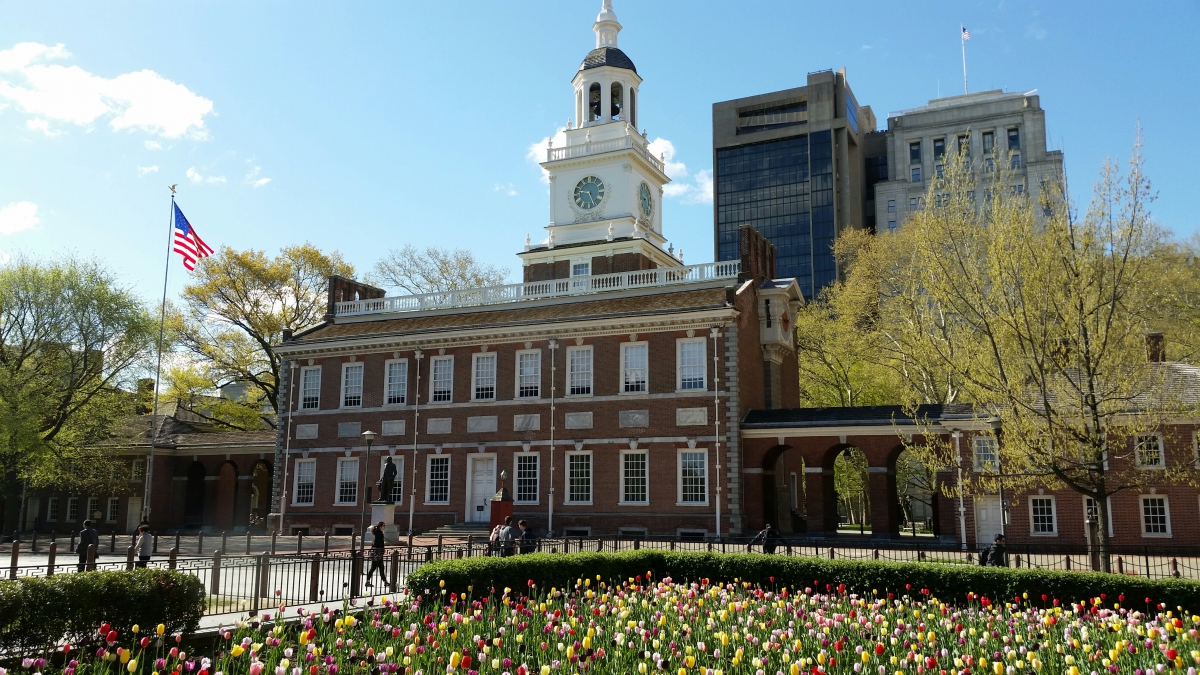
Independence Hall Today
The History
Independence Hall’s amazing history far predates the American Revolution and goes all the way back to 1732, the same year when George Washington was born. In 1732, Philadelphia was only 50 years old, but it was already quickly growing into the largest city in the American Colonies and the Capital city of Pennsylvania. Pennsylvania’s colonial government was looking to build a brand new State House and chose a plot of land west of 5th Street on Chestnut Street, in an area that was largely unpopulated at the time. Andrew Hamilton, who was a famous lawyer and Speaker of the Pennsylvania Assembly, developed the conceptual plans for the Georgian Style Pennsylvania State House. Edmund Woolley, the master builder, then drew the designs.
Construction of Independence Hall, then known as the Pennsylvania State House would begin in 1732. The construction of the building was an enormous undertaking. Designed to house the Pennsylvania Assembly, the Governor’s Office, the Supreme Court of the Colony of Pennsylvania, as well as a large hall for banquets and celebrations, the building was among the largest in America at the time of its construction. The Pennsylvania Assembly began meeting in the building in 1735, but construction was not considered complete until 1748. Not long after the Pennsylvania State House was initially completed, the building was once again undergoing construction. William Strickland was hired around 1750 to build a bell tower as an addition to the State House, a tower which would eventually house the famous bell known as “The Liberty Bell.”
For forty years, the Pennsylvania State House served as the seat of the British Colonial Government in Pennsylvania. But then, in April of 1775, the first battles of the American Revolution broke out at Lexington and Concord, just outside of Boston. Less than a month after those battles, delegates from the thirteen American Colonies would convene in Philadelphia for the Second Continental Congress, and they choose the Pennsylvania State House as the location of their important assembly. While meeting at the Pennsylvania State House, the Second Continental Congress chose George Washington as the General of the newly formed Continental Army. Then after over a year of trying to resolve their problems with the British, on July 4th, 1776, the members of the Second Continental Congress declared their Independence from the British Crown!
Eleven years later, the American Revolutionary War had ended, the United States had achieved its Independence, but all was not well. The fledgling nation of America was deep in financial debt from its long and costly war for Independence, largely unable to even pay the soldiers who had fought so bravely for the country’s independence. Making matters even worse, the Articles of Confederation, which was adopted by America’s government during the Revolutionary War, was beginning to fail. Angry citizens were beginning to protest and revolt. The United States of America was only a few years old, but already the new nation was on the verge of collapse.
In an effort to resolve these problems, many of America’s Founding Fathers came back to Philadelphia to gather in a familiar place, the Pennsylvania State House in 1787. It was at their meeting, known today as the Constitutional Convention, that America’s Founding Fathers began to craft a new government framework. Prior to serving as the first President of the United States, George Washington served as President of the Constitutional Convention. In addition to Washington’s leadership, Benjamin Franklin worked with his fellow Founding Fathers in terms of finding common ground. To that end, Franklin still resonates with 21st century Americans. Walter Isaacson, author of a best-selling Franklin biography, said:
“The most important thing he [Franklin] brings to our time is his tolerance and respect for pluralism that he believed was the core of democracy. He was always looking for common ground.”
America’s Founding Fathers finally reached consensus and compromise after months of heated debate, and they signed the United States Constitution inside of the Pennsylvania State House on September 17, 1787.
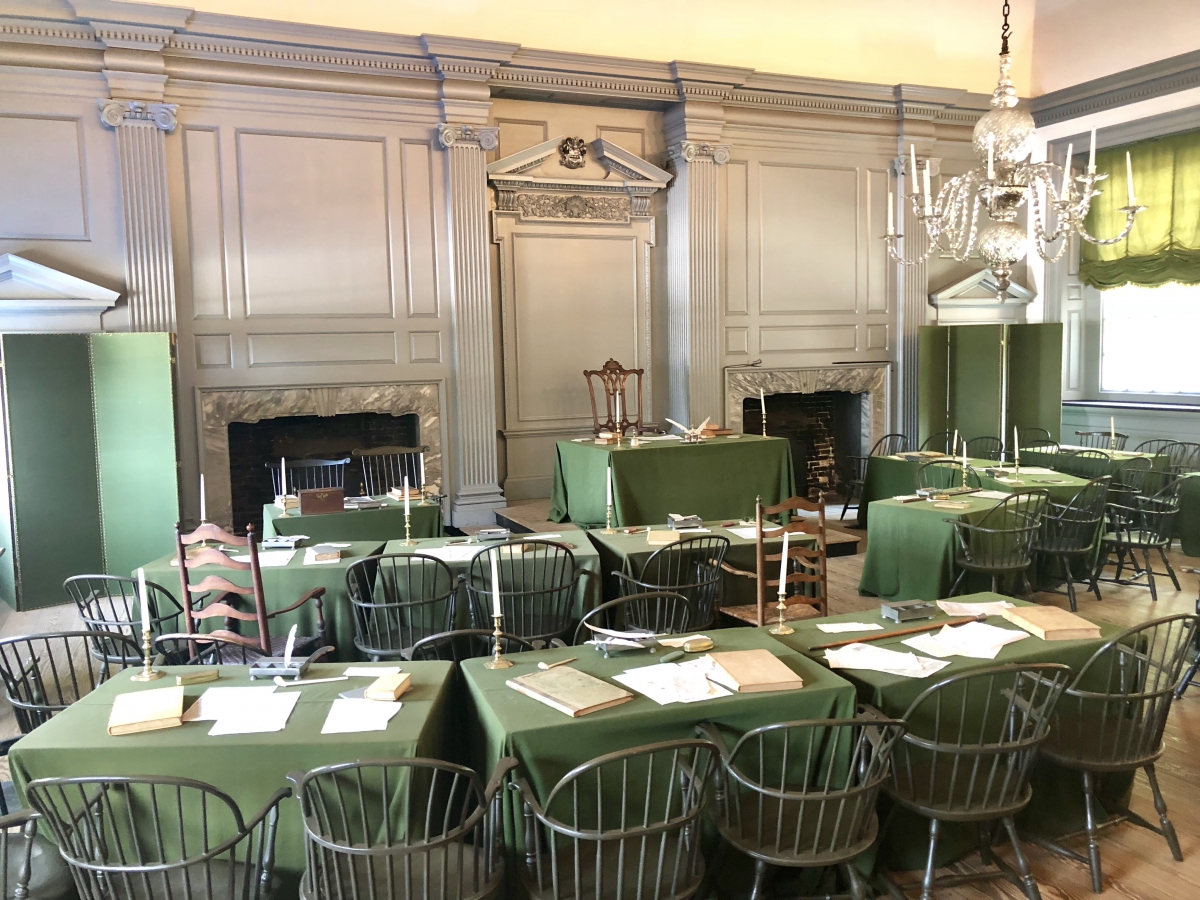
The Assembly Room of Independence Hall - Location of the Signing of the Declaration of Independence and the United States Constitution
A Rising Sun
When you go inside of Independence Hall, make sure to see the only original piece of furniture that is still in Independence Hall today, the high-back chair that has a gilded sun carved at the top. Throughout the Constitutional Convention, Franklin noticed this chair and the half-sun depicted on it. Reflecting that artists often found it difficult in their work to distinguish a rising sun from a setting one, Franklin commented that he had similar concerns about the future of America. Was the sun rising or setting upon this nation? But, as Franklin saw the finished Constitution of the United States taking form and the system of government it would produce, he proudly declared, “Now, at length, I have the happiness to know that it is a rising sun and not a setting sun!”
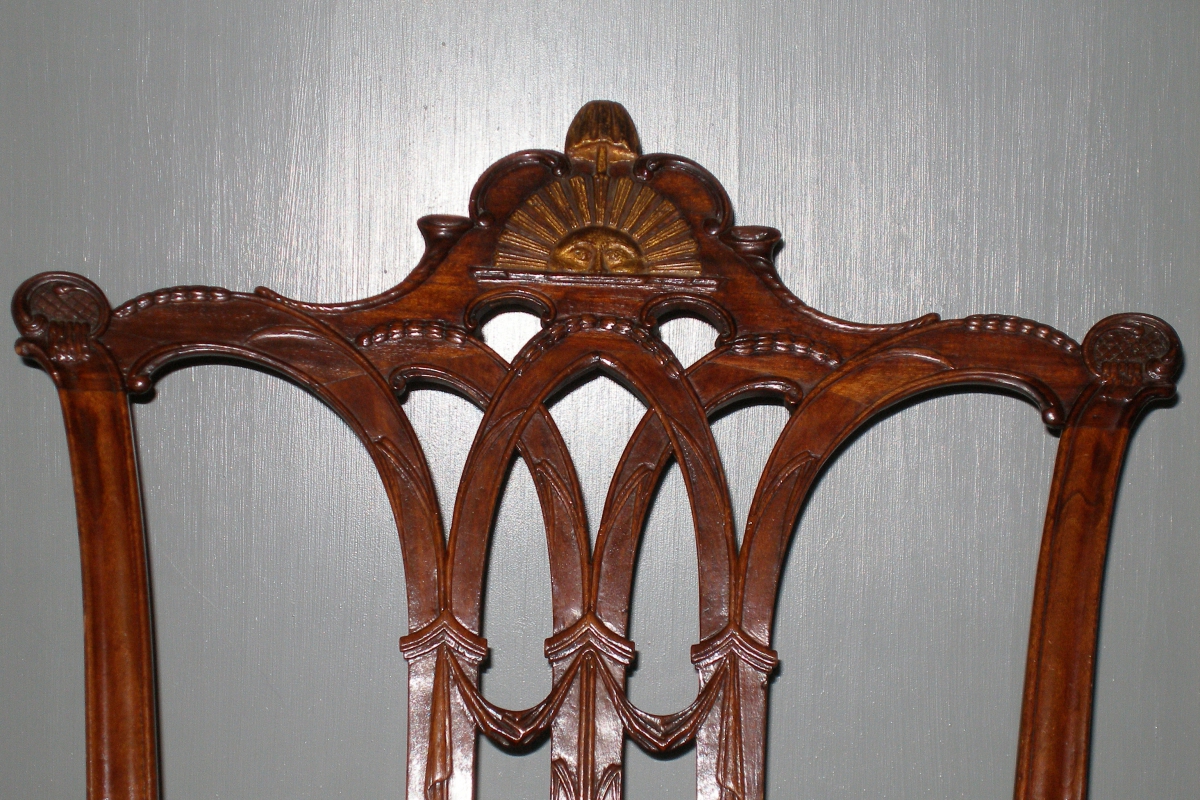
The Rising Sun Chair - Photo Credit: National Park Service
The Hall of Independence
The monumental importance of the Pennsylvania State House was perhaps first recognized by famous Revolutionary War hero, the Marquis de Lafayette who spoke at the Pennsylvania State House in 1824. General Lafayette referred to the old Pennsylvania State House as the “Hall of Independence,” giving rise to its current name of Independence Hall. Today, Independence Hall is often referred to as “America’s Birthplace,” since it is not only the location where Americans declared their independence, but also the location where the United States Constitution was created, the “living and breathing” governing document that the United States has used from 1787 to the present.
What to See
Today, Independence Hall is a National Historic Landmark and a UNESCO World Heritage Site that is open to the public for tours. On your visit inside of Independence Hall, you will receive a guided tour from a National Park Ranger. Every tour will stop in the room that served as a courthouse and was once the Supreme Court of Pennsylvania. You will also be able to stand in the very room where the United States of America was born.
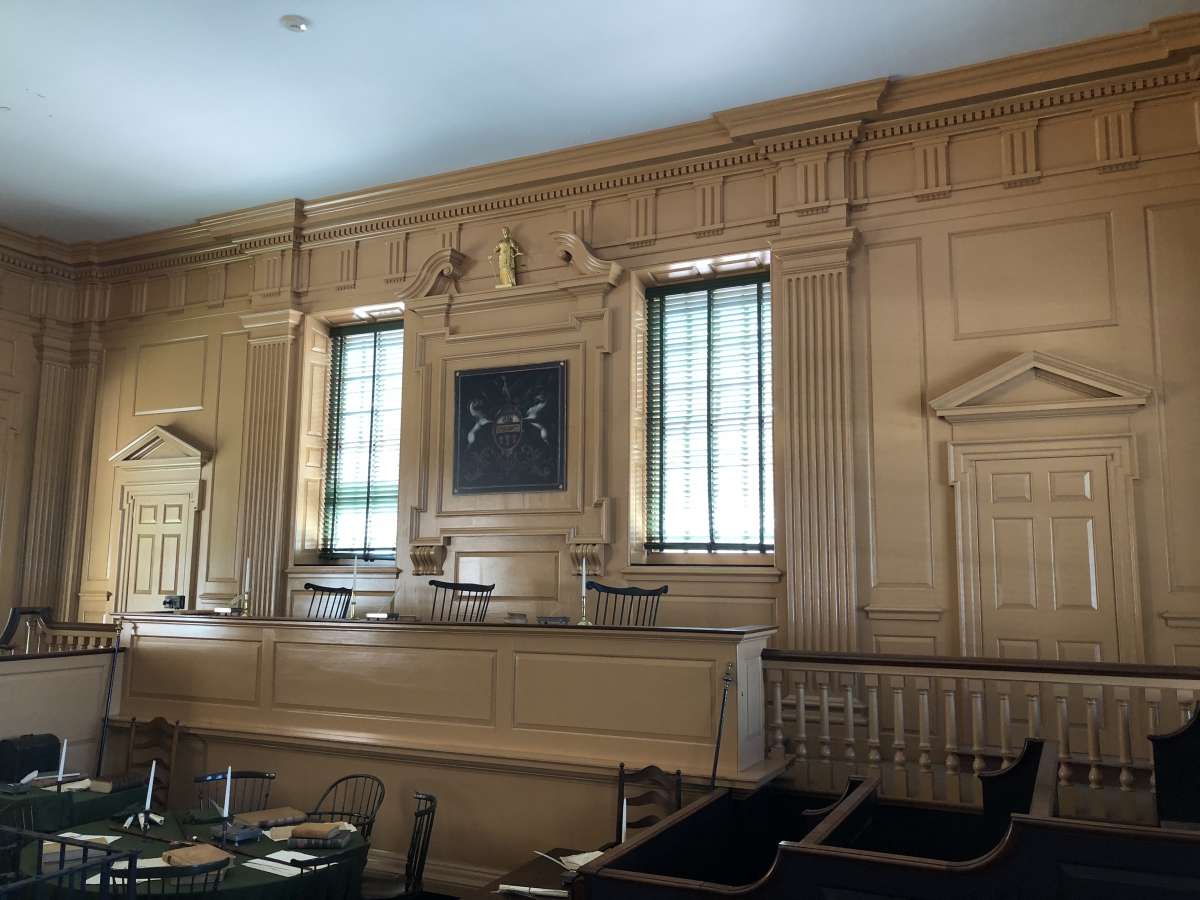
Courthouse in Independence Hall that once served as the Supreme Court of Pennsylvania
In the Winter, there is also a chance that you can see something extra! For example, in January and February the weather can be quite cold and there are considerably less visitors to Independence Hall. This lack of tourists can really work to your favor. On these winter tours, guests may often get to spend a bit more time inside Independence Hall. Tours are generally 15 minutes longer, and in addition to seeing the room that once housed the Supreme Court of Pennsylvania, and the Assembly Room where the Declaration of Independence and United States Constitution were signed, you may get the opportunity to go upstairs.
Upstairs you’ll see the Long Gallery, a large room that runs the length of the front of the building which was designed as a reception area. The Long Gallery has hosted banquets for visitors to the Royal Governor of the Colony of Pennsylvania, served as a military prison during the Revolutionary War, and was even once home to the Peale Museum, one of the earliest museums in America. Also on the second floor is the Governor’s Council Chamber, the former executive branch of Pennsylvania.
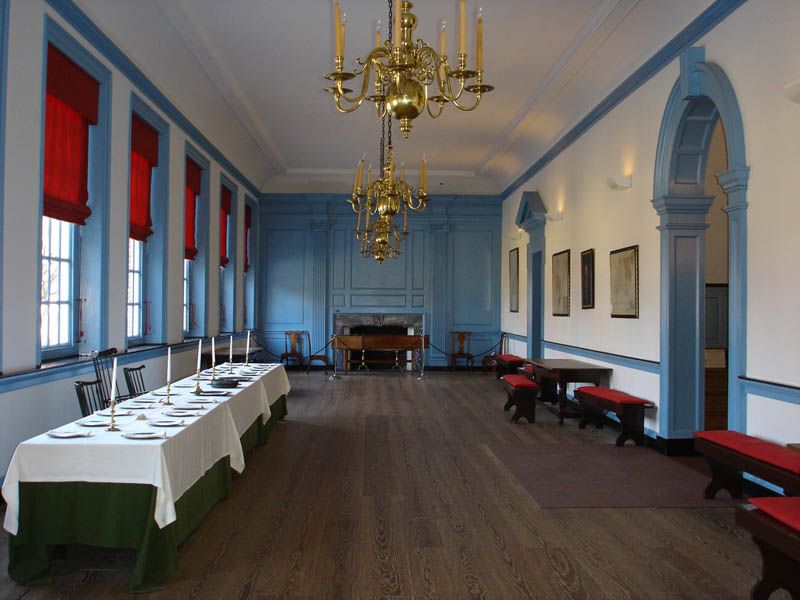
The Long Gallery of Independence Hall on the Second Floor
While in the secure area that includes Independence Hall, you can also visit two other building aside from the main tour of Independence Hall. Congress Hall was built to be the Philadelphia County Courthouse, but was also used as the U.S. Capitol Building while Philadelphia was the Capital of the United States from 1790-1800. Free tours of Congress Hall run every 20 minutes from April to October and once every30 minutes during the rest of the year.
Inside Congress Hall, you will see where both the United States House of Representatives and the United States Senate met in their earliest years. Also inside the secure area of Independence Hall is the Great Essentials Exhibit in the West Wing of Independence Hall which displays original copies of the Declaration of Independence, Articles of Confederation and United States Constitution. Also on display is the Syng inkstand which is an original to Independence Hall and believed to be used to sign these important documents.
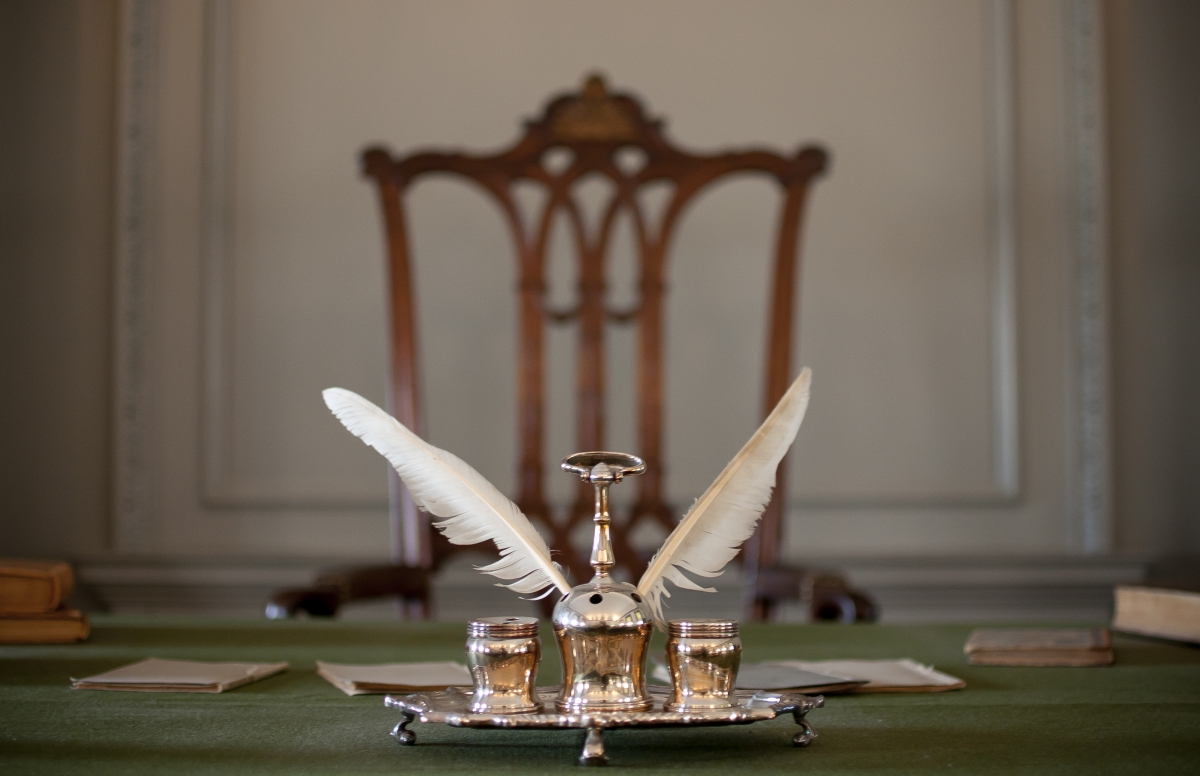
The Syng Inkstand - Believed to have been used to sign The Declaration of Independence - Photo Credit: National Park Service
Insider Info
The easiest way to visit Independence Hall is to book a VIP tour with The Constitutional Walking Tour! We can assist with arranging your tickets and picking them up for you. We'll then guide you to Independence Hall within the context of a customized tour experience that lets you see exactly what you want to. With The Constitutional, there is no need to wait in line for tickets or to find your way to the correct entrance, we'll take care of all of that for you, and you'll have a knowledgeable guide with you every step of the way.
Visits to see the inside of Independence Hall can be incorporated into private tours for all kinds of groups. If you're a family or a small group, you can take The Constitutional's VIP Tour which includes Independence Hall tickets as part of this special tour, subject to availability. Independence Hall tickets can also be added to other group tour experiences such as field trips, corporate groups, etc., subject to availability and a service fee.
Movie Set
Independence Hall is famous for many historical reasons, and to that end, you may be familiar with it since it has served as a movie set, including for:
National Treasure starring Academy Award® winner Nicolas Cage (Best Actor) as Benjamin Franklin Gates. Check out some of the amazing scenes featuring Independence Hall.
Shooter starring Mark Wahlberg as Bob Lee Swagger, a former U.S. Marine Corps sniper. Check out some of the amazing scenes featuring Independence Hall.
How to Get There
For guests of The Constitutional Walking Tour, it is very easy to visit Independence Hall either before or after your walking tour with us. The Independence Visitor Center (where you can pick up your tickets for Independence Hall) can be found just across the street from the National Constitution Center where The Constitutional Walking Tour begins and ends.
Once you’ve gotten your Independence Hall tickets at the Independence Visitor Center, it’s very easy to get to Independence Hall. To make it even simpler though, if you ask the Park Ranger who gave you your tickets, they will give you a small map that will easily direct you from the Independence Visitor Center to Independence Hall. Just head out of the main entrance of the Independence Visitor Center that faces Market Street. Ccross Market Street and then walk across the green field known as Independence Mall. Head diagonally the left hand side of the block (at the corner of 5th & Chestnut Streets), and then continue straight across Chestnut Street. You’ll then see signs directing you into the entrance of Independence Hall.
If you are arriving via public transit, the subway closest stop is 5th Street Station on the Market Frankford Line. You can also take regional rail to Jefferson Station which is on Market Street between 10th & 12th Streets and then walk several blocks heading East to the Independence Visitor Center at 6th and Market Streets. There are also numerous parking garages in the area to serve those who drive, including an underground garage conveniently located directly underneath the Independence Visitor Center.
Hours
First Tour: 9:00AM
Last Tour: 4:30PM
Additional Information
520 Chestnut Street
Philadelphia, Pa 19106
215.965.2305
